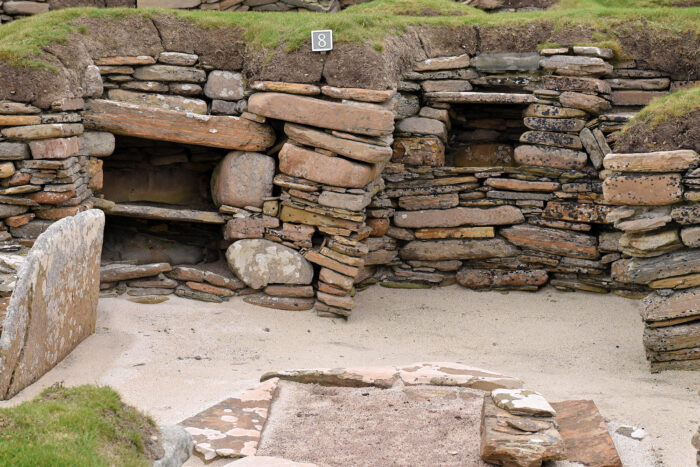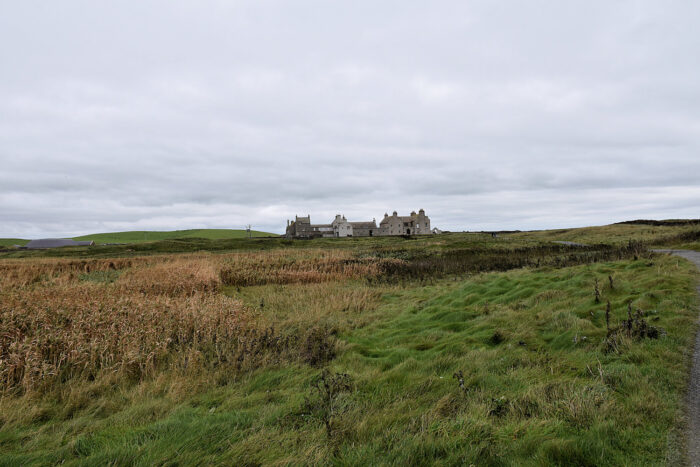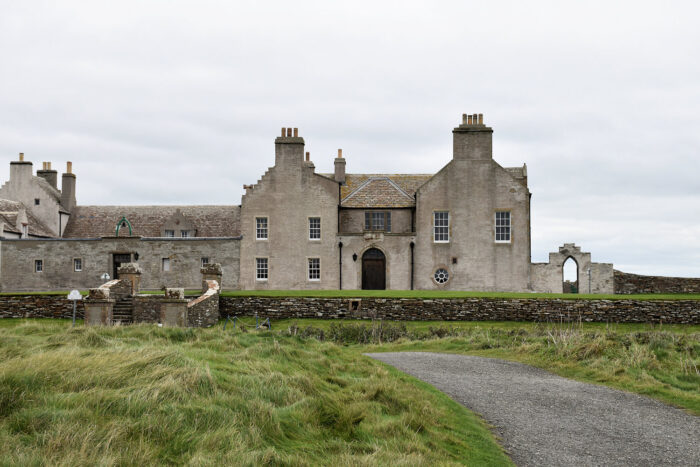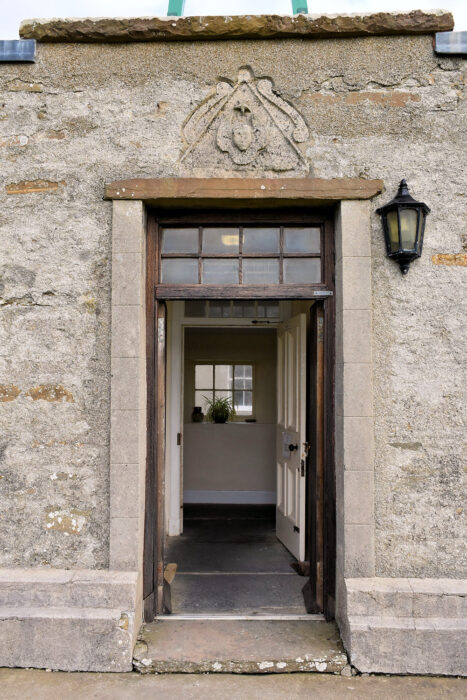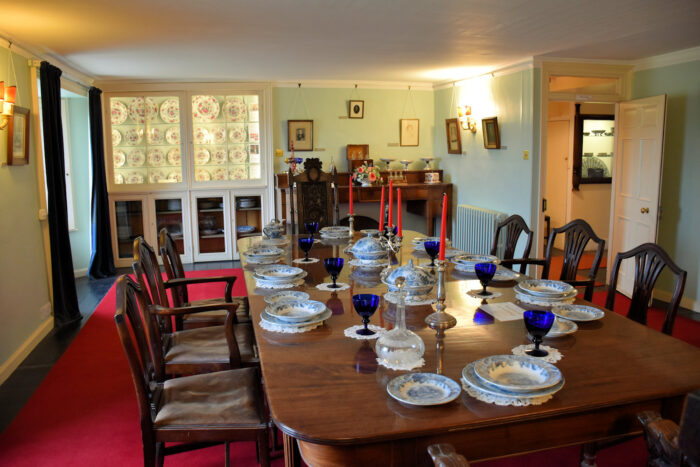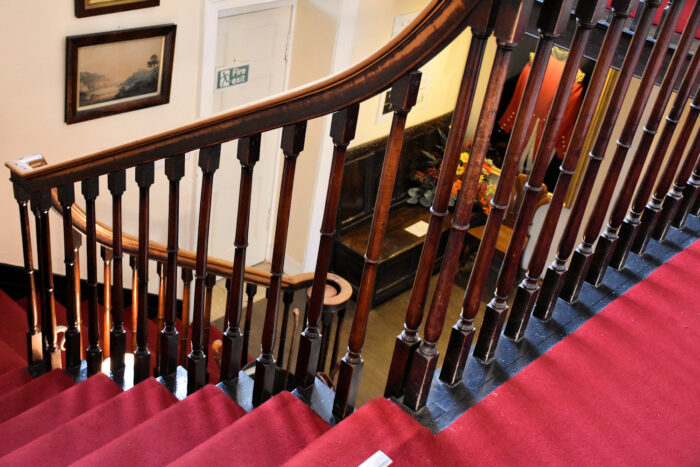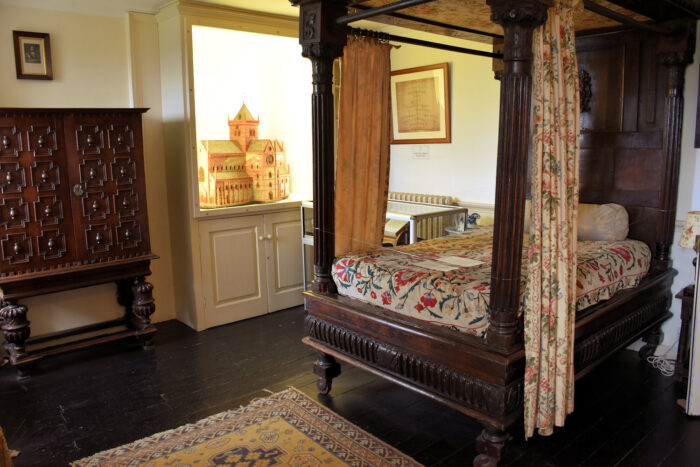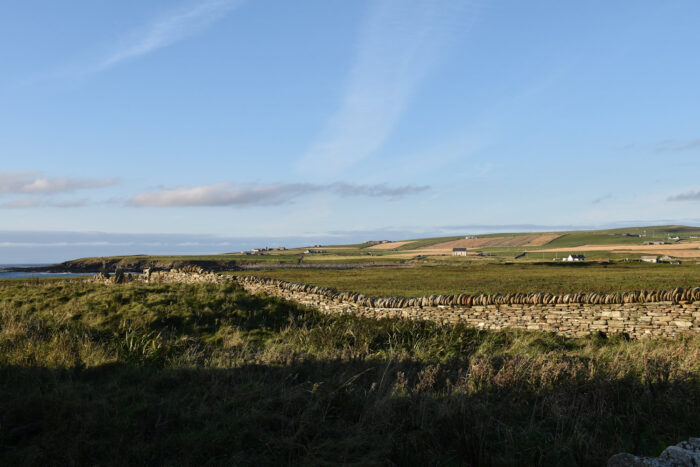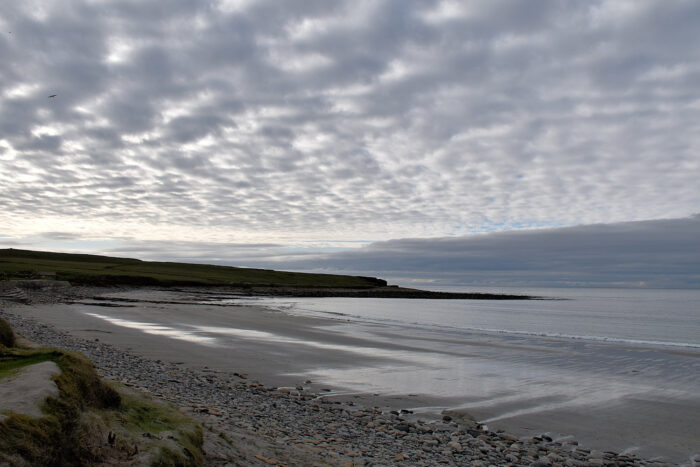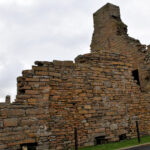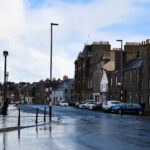So Skara Brae is the main tourist attraction but it’s a bit hard to get to by bus. It’s on the far side of the main island and, at this time of year, there are three buses each week (Saturday, Monday morning and Thursday afternoon.) Well, six if you count the return bus. So it became the last thing I did while staying in Kirkwall.
On the way there, I took some photos from the bus because I wanted to show you how beautiful the loch was when it’s calm, and maybe some other things.
🙂
Kitchener’s Memorial if you’re interest in World War I.
At Skara Brae there’s a visitors centre then you work out to the site of the village. Along the way are markers of events in world history to demonstrate how far back in time this village was inhabited, and not to remind you–again–that it is older than the Stonehenge and the Giza Pyramids of Egypt. About 3100-2500 BCE it was inhabited. That’s older than… well, you know.
The village site is fairly small. You could probably give easily go around it in half an hour, and there’s invariably a number of other visitors there, even in autumn (although at one point it was just me and the two guides, as one of the guides pointed out). But the site is significant historically because when it was discovered (in the 1850s) all that was known about the Neolithic people came from standing stone and burial chambers, which while cool, don’t tell you much about the people who created them. It is significant archaeologically because it’s very intact for its age. And it’s significant touristly, because
well, it doesn’t take a lot of imagination to see what is going on. A living area, with a central hearth, beds along the side and other furniture. (If you go to Orkney, it would be a good idea to go here first, because it helps you understand what you’ll see at other sites.)
When it was built, the exhibition area says, it was further inland, near a freshwater lagoon. Now it is very near the sea.
In fact, part of House 3 fell into the sea.
Covered walkways connect the houses.
This building is believe to be a workshop, maybe for stone or pottery making.
Workshop up close.
Also, lots of rabbits.
Skaill House is a 17th century manor house. Back in the 1850s, after a big storm, the guy who lived here was walking on the dunes and discovered an entire Stone Age village was hiding under the sand. Well he probably didn’t realise it was an entire village at first but he knew he’d found something significant.
An interesting looking place.
But inside they’ve managed to make it quite boring (Or have I just visited too many old houses? I tend to avoid them because there’s a certain sameness after a while, regardless of when they were built.)
Except for the pink bathroom. That was different.
If I read the plans right, and based on the windows that you can’t see, this is the oldest part of the house. It’s furnished as the Bishop’s Bedroom (complete with a model of the cathedral), for the original owner of the house.
Home time now, and the evening light is interesting.
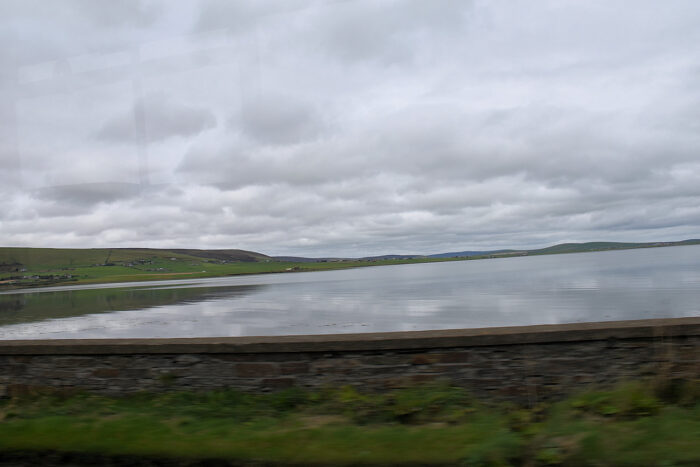
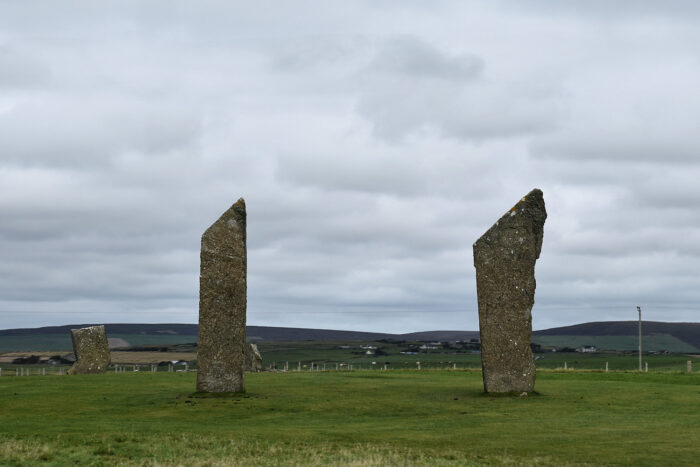
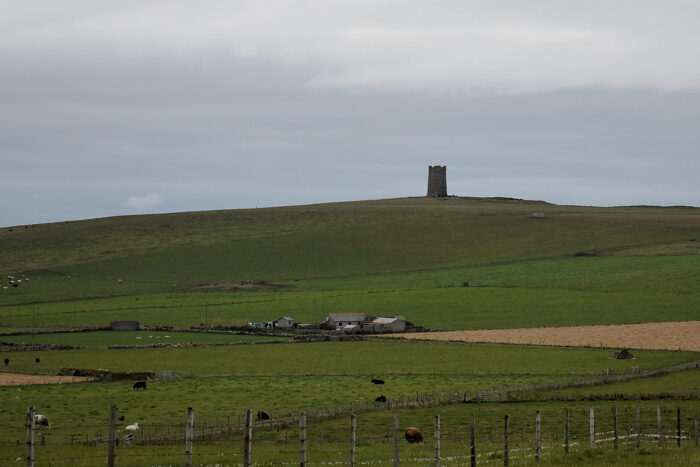
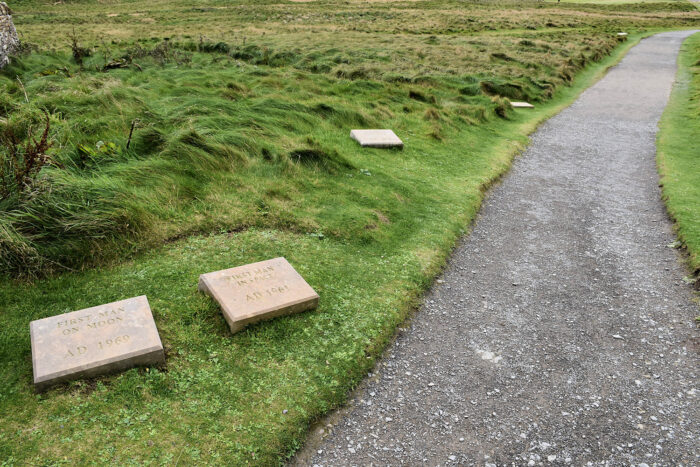

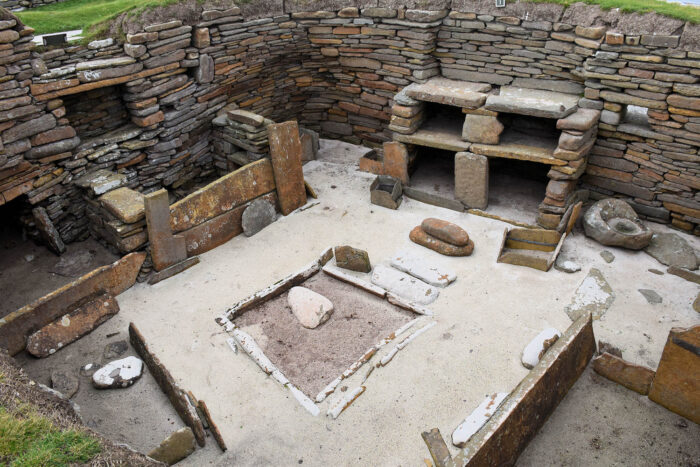
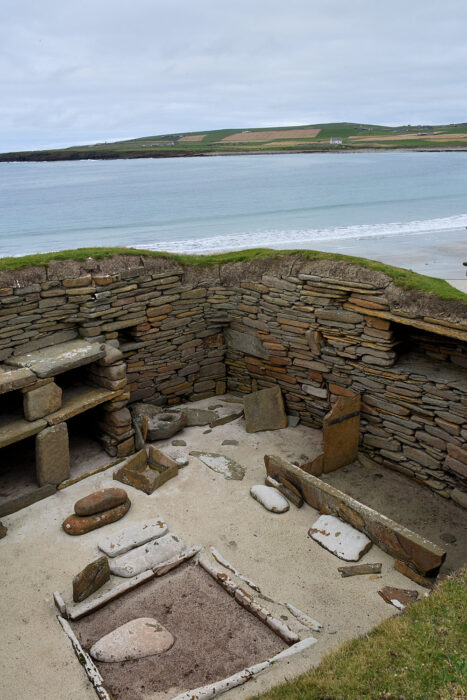
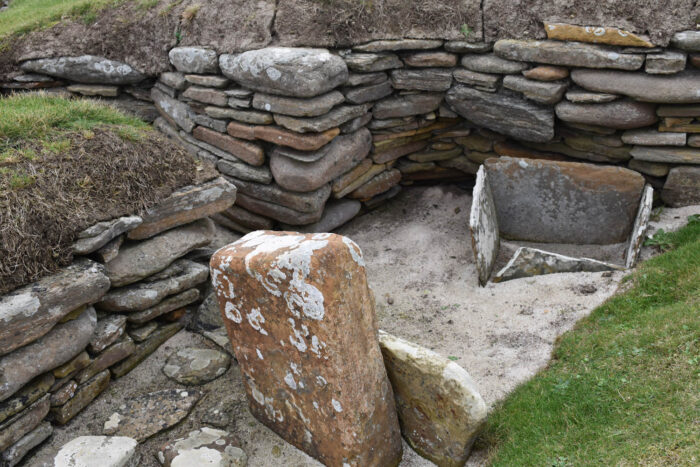
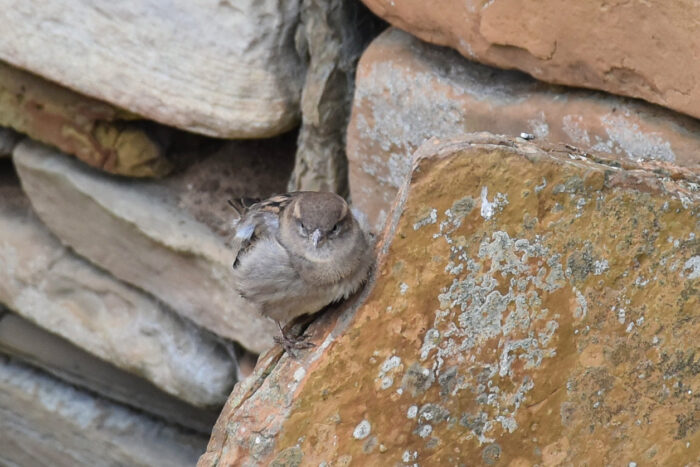
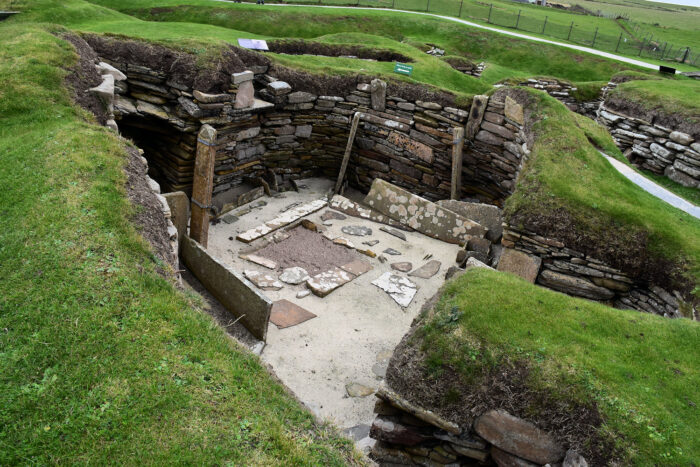
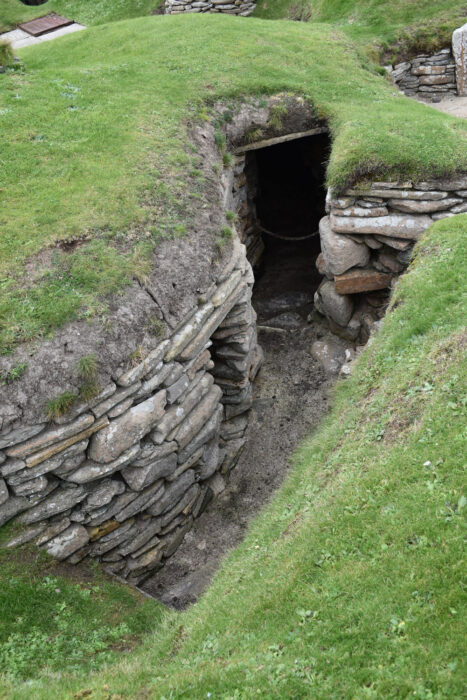 \
\
